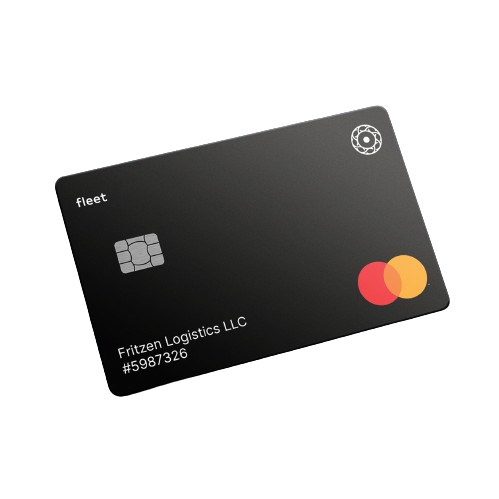Your Post Trip Inspection Checklist: 4 Steps
Whether you’re delivering products directly to customers in your city or transporting larger shipments nationwide, your company's success rests largely on the condition of the vehicles that get your drivers—and the packages they’re carrying—where they need to go.
The best way to ensure that all the vehicles in your fleet are always in tip-top shape and ready to hit the road? In addition to a pre trip inspection, having your drivers perform a thorough post trip inspection at the end of each day will set you up for safe operation.
But what is a post trip inspection required by DOT, and what should be on your checklist? Keep reading for the answers to those questions, plus five steps to successfully tackle post trip inspections.
But what is a post trip inspection checklist, and what should be on it? Keep reading for the answers to those questions, plus five steps to successfully tackle post trip inspections.
What Items Should a Post Trip Inspection Include?
In part, the items on your checklist depend on the type of fleet you’re managing. For example, a checklist for a fleet of vehicles that pull trailers will likely include special items, like checking trailer latches and coupling mechanisms, that aren’t necessary for fleets of vehicles traveling without trailers.
That said, many items remain standard across fleet types, while certain checklist items are required by law.
In other words, a post trip inspection checklist that works for your company might not look exactly like a checklist that works for another company. That’s why it’s important to combine items that are required by law with items that make sense for your specific fleet.
Begin by assessing the needs of your fleet. Are your drivers traveling long distances or making shorter, regional trips? What type of commercial vehicle are they operating?
Follow these four steps to create a failsafe post-trip inspection checklist, ensuring the safety of your fleet and drivers.
Then, follow these four steps to get on the road to a failsafe post trip inspection checklist.
#1 Know What’s Required By Law
When is it appropriate to conduct a post trip inspection, you may ask?
The Department of Transportation mandates that CMV operators perform post trip inspections at the end of each day, on each vehicle that they operate 1.
Fortunately, the Federal Motor Carrier Safety Administration (FMCSA) provides a clear and comprehensive checklist of its own, so the best place to start devising yours is by making sure that you satisfy the legal requirements for vehicle safety.
The FMCSA requires that you check the following during periodic inspection2:
- Brakes – A post trip inspection checklist that’s compliant with FMCSA regulations includes checks for all of the braking systems on a vehicle. This includes standard service brakes as well as hand brakes or parking brakes. If your vehicles tow trailers, you’ll want to check the connections there as well.
- Lights – The FMCSA requires that the lighting systems on each vehicle are checked following operation, so be sure that your post trip inspection checklist includes instructions for checking headlights, tail lights, turn signals, and any reflectors on the vehicles.
- Steering – Operators should perform a visual inspection of the vehicle's steering mechanism. That means checking fluid levels and filter conditions as well as components such as bolts, kingpins, and drag links 2 .
- Tires – Be sure to have your drivers check in on the tires. That could include checking inflation pressures, visually inspecting tires for punctures or debris like nails or glass, and even measuring tread depth 4.
- Windshield wipers – According to FMCSA regulations, every vehicle in your fleet must feature operable windshield wipers on the front windshield. Wipers should be able to clear away condensation like rain and snow and ensure driver visibility. Your drivers should also check wiper fluid levels and the condition of the defrosting mechanism, which is a requirement for fleets that operate in colder climates 5.
- Horn – A fully compliant post trip inspection checklist includes checking the vehicle’s horn, which may include checking the horn fuse or ensuring that the horn button works properly 6.
- Mirrors – Drivers should check the condition of the vehicle’s exterior rearview mirrors. The FMCSA requires that most vehicles have a mirror on each side of the truck so that the driver can see the “blind spots” located along the sides of the vehicles 7.
- Emergency equipment – In its list of emergency equipment, the FMCSA includes a fire extinguisher, spare fuses, and warning signals like flares or reflective triangles—so it’s important to verify after each trip that these are present and in working order 8. But to be thorough, have your drivers check the condition of tools like lug wrenches, flashlights, and tire jacks, a first aid kit and other protective equipment for drivers, and other items like jumper cables, engine oil, and coolant.
- Coupling devices – If your drivers are pulling trailers, it’s imperative to check that the coupling mechanisms are in good working order at the end of each trip.
#2 Don’t Overlook the Odometer
It isn’t required by the FMCSA, but you’ll want to have your drivers check and record the odometer reading at the end of each day. Doing so allows you to track important metrics related to your fleet, such as:
- Mileage
- Fuel usage
- Unauthorized use
Keeping tabs on factors like mileage and fueling after each trip ends is even easier when you unlock the power of fuel cards and fleet tracking. Powered by Visa and available from AtoB, fuel cards enable your drivers to fuel up and make vehicle-related purchases wherever Visa is accepted.
But the best part? They enable you to track and control fuel spending, keep costs down, and streamline the process of managing the finances associated with fleet management.
#3 Have a Standard Post Trip Inspection Form
In addition to requiring a post trip inspection on every fleet vehicle in operation, the FMCSA requires drivers to fill out and sign an inspection form 9. For that reason alone, you should have a standard form that every driver uses to perform inspections.
But beyond meeting the DOT compliance checklist, having a standard form is a good way to ensure your drivers are individually prepared to conduct proper inspections. This is especially true considering your checklist will likely include items specific to your fleet.
A satisfactory post trip inspection form should be easy for every driver on your team to:
- Read
- Comprehend
- Review
#4 Take Advantage of Technology
If the phrase “standard form” conjures images of a truck driver clutching clipboards and marking off boxes using Bic pens, it’s time to update your thinking. Harnessing the power of technology can simplify the post trip inspection process and help guarantee accurate vehicle inspections every time.
Fleet fuel cards are one example, as they digitize the way your drivers pay for expenses on the road. But why stop there?
You may consider solutions such as upgrading to a fleet management system that includes functions for completing a Driver Vehicle Inspection Report (DVIR). Or, you could have your drivers ditch pen and paper in favor of high-tech gadgets for inputting thorough inspection results, like:
- Smartphones
- Tablets
- Other handheld devices
{{CTA}}
Why Is a Post Trip Inspection Important?
It’s difficult to overstate the importance of an adequate post-trip inspection when it comes to guaranteeing that your fleet is always road-ready.
Trips to the mechanic for regular vehicle maintenance and special repairs are standard operating procedures for most companies operating commercial vehicles. The success of a trip depends on every part—from the brakes to the taillights—to operate as it should. And when they don’t, you don’t hesitate to take the vehicle in for repairs.
But by implementing a post trip inspection system, you gain up-to-the-minute insight into the condition of your fleet vehicles. In turn, you’re better able to:
- Keep tabs on the vehicles in your fleet – The old adage that prevention is better than any treatment holds true when it comes to the vehicles that your drivers operate. When every vehicle is checked after every trip, you’re more likely to spot small problems before they become big ones and keep your vehicles in good condition.
- Keep your drivers safe – A post trip inspection can go a long way toward ensuring that your drivers are safe on the open road by helping to spot mechanical problems. Otherwise, those issues could put safety at risk and interrupt operations.
- Remain compliant – A post trip inspection of all vehicles is required of most companies by law. As we mentioned earlier, the United States Department of Transportation requires all drivers of commercial motor vehicles (CMVs) to inspect their vehicles at the end of each day 10. They must also fill out and sign a Driver Vehicle Inspection Report (DVIR), which must be kept on file with the motor carrier for at least three months 11.
How to Ensure Proper Post Trip Inspections for Your Fleet
You go the extra mile to ensure that your drivers are well-trained in every aspect of their job, from being properly licensed to knowing how best to handle the materials that your company ships. But it’s important that their training includes instruction on how to perform a post trip inspection.
So, how can you ensure all of your drivers are adequately equipped to assess the condition of the vehicles in your fleet and meet DOT compliance? It may be as simple as implementing procedures for training drivers on post trip inspections along with the other training they receive. This training may occur at the following times:
- During onboarding
- At regular intervals during employment
- On an “as-needed” basis
In addition, make sure any thorough inspection training includes a comprehensive procedure for managing issues that may arise. Your drivers should know how to act when headlights fail or brakes get squeaky.
Fuel Up Your Fleet With Fuel Cards from AtoB
If you’re looking for ways to optimize how you manage your fleet, you’ve come to the right place. At AtoB, our fuel cards are making fleet expenses management easier than ever—and offering you a chance to save on fuel.
Backed by Visa and accepted nationwide, our fuel cards offer a simple solution for fuel tracking, spending, and managing your transportation expenses. Whether your drivers are traveling across the country or just across town, turn to AtoB for competitive discounts, transparent pricing, and top savings on vehicle-related expenses. Contact us to get enjoy all the potential fleet card benefits today!
Sources:
1 Federal Motor Carrier Safety Administration. The Motor Carrier Safety Planner. https://csa.fmcsa.dot.gov/safetyplanner/MyFiles/SubSections.aspx?ch=22&sec=65&sub=148
2 Federal Motor Carrier Safety Administration. The Motor Carrier Safety Planner. https://csa.fmcsa.dot.gov/safetyplanner/MyFiles/SubSections.aspx?ch=22&sec=65&sub=148
3 Trucking Info. What to Know About Steering System Maintenance. https://www.truckinginfo.com/10157876/what-to-know-about-steering-system-maintenance
4 Trucking Info. How to Test Truck Tires in Your Fleet. https://www.truckinginfo.com/329037/tire-testing-heres-help
5 GovInfo.gov. Code of Federal Regulations (CFR-2001-title49-vol4-sec393-82). https://www.govinfo.gov/content/pkg/CFR-2001-title49-vol4/pdf/CFR-2001-title49-vol4-sec393-82.pdf
6 Your Mechanic. Symptoms of a Bad or Failing Horn Switch. https://www.yourmechanic.com/article/symptoms-of-a-bad-or-failing-horn-switch_2
7 GovInfo.gov. Code of Federal Regulations (CFR-2001-title49-vol4-sec393-82). https://www.govinfo.gov/content/pkg/CFR-2001-title49-vol4/pdf/CFR-2001-title49-vol4-sec393-82.pdf
8 Federal Motor Carrier Safety Administration. Emergency Equipment. https://csa.fmcsa.dot.gov/safetyplanner/MyFiles/SubSections.aspx?ch=22&sec=64&sub=133
9 Code of Federal Regulations. Driver vehicle inspection reports. https://www.ecfr.gov/current/title-49/subtitle-B/chapter-III/subchapter-B/part-396/section-396.11
10 Federal Motor Carrier Safety Administration. The Motor Carrier Safety Planner. https://csa.fmcsa.dot.gov/safetyplanner/MyFiles/SubSections.aspx?ch=22&sec=65&sub=148
11 Code of Federal Regulations. Driver vehicle inspection reports. https://www.ecfr.gov/current/title-49/subtitle-B/chapter-III/subchapter-B/part-396/section-396.11
Get started with AtoB

Reviewed by
Vedant Khamesra is the driving force behind product management at AtoB. Specializing in strategic partnerships, SMB solutions, and new product development, Vedant seamlessly navigates P&L responsibilities while leading product execution and strategy. He is fueled by AtoB's mission to empower truckers and fleets with intelligent financial tools and services, making their lives easier and more rewarding.



